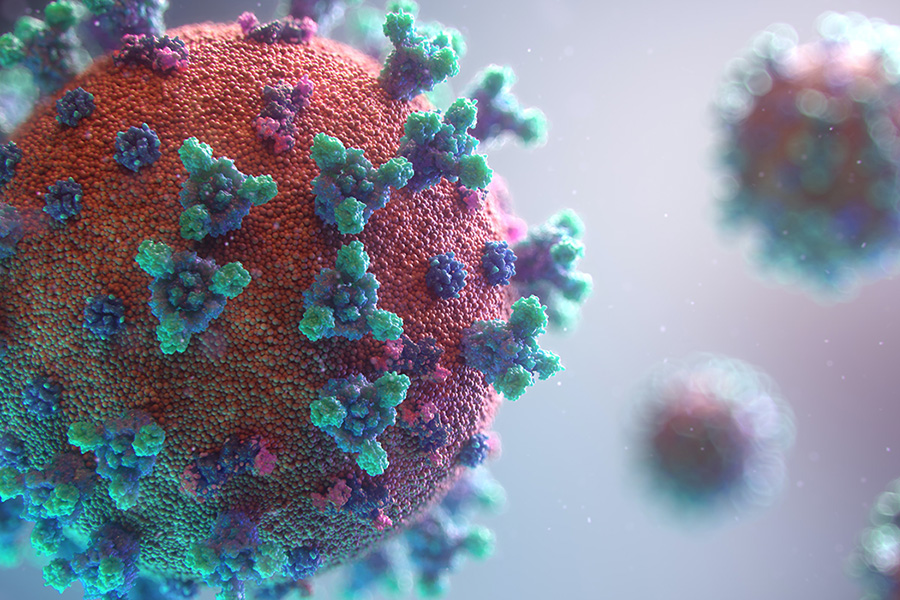
Tracking Contagions
By Giordana Verrengia
Media InquiriesA team of researchers led by Carnegie Mellon’s Mansi Sood studies how contagions spread and mutate on complex networks. The work was published in the Proceedings of the National Academy of Sciences (PNAS).
The team approached the problem of demystifying the interplay of viral mutations and network structure on the emergence of epidemics. Whereas other models have applied either a multi-strain or multi-layer approach, this example is unique because it uses both.
“The multi-layer network structure accounts for the fact that not all interactions between agents are identical,” said Sood, a Ph.D. student in electrical and computer engineering, who studies network science. “The multi-strain model is a model that captures the spread of a contagion that can evolve as it spreads.”
Determining the probability of new strains cropping up is essential to managing an outbreak because of the chance that variants could be resistant to established preventative measures and treatment options like vaccines and medicine. The risks of not being prepared for aggressive mutations are plenty. As happened at the start of the COVID pandemic, when there were no viable treatments, non-pharmaceutical interventions like remote learning and working from home could come into play.
The findings from the report can also shed light on the efficacy of strategies such as lock-downs put in place to mitigate the spread of a virus. According to the report, “imposing/lifting interventions in different network layers should be evaluated in connection with their effect on the emergence of new strains.”
For Sood, applying her knowledge of networked systems to public health was an exciting new project, as was the opportunity to collaborate with engineers who each had different specialties. The group was rounded out by an evolutionary biologist who could lend perspective on how pathogen mutations develop.
“All the different perspectives made the paper more nuanced,” said Sood of the interdisciplinary toolkit.
The model described in the paper uses heterogeneity in both the multi-layer and multi-strain aspects, meaning that it distinguishes the transmission rate for different strains of the virus and determines a unique risk factor for various social network layers, like comparing an office space and a private social gathering. It’s important that both the multi-layer and multi-strain components take this heterogenous approach so that in the event of a viral outbreak, mitigation strategies are informed by specific information tailored to the details of each environment.
The capabilities of this model will likely continue to evolve.
“We are working towards extending the multi-layer modeling framework to incorporate more modes of heterogeneity in the network,” said Sood, explaining that future models will look to account for immunity within groups.
“An important future direction is to expand the network-based analysis of multi-strain spreading to allow for the case when the previous infection with one strain confers full immunity only with respect to that specific strain.”
“This work has implications that go beyond the spread of viral diseases and can be useful in modeling social contagions as well, including the spread of (mis)information in social networks,” said Osman Yagan, a research professor in electrical and computer engineering, who also worked on the project. “Similar to different strains of a pathogen arising through mutations, different 'versions' of the information might be created as the content is altered on social media platforms, with the resulting variants of the information having different transmission characteristics from each other.”